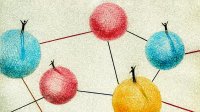Building Your Professional Learning Network
Teachers need ways to connect with peers, exchange ideas, collaborate and share resources, and engage in meaningful discussions.
Your content has been saved!
Go to My Saved Content.Finding time throughout the school year to engage in professional learning can be a challenge for educators. Being part of a learning community can help. Learning communities and professional learning networks (PLNs) can be a catalyst not only for professional growth, but for our personal growth as well.
Teaching can be isolating, and that isolation and lack of support can lead to burnout. PLNs help educators to escape the isolation that can become part of the profession. By connecting with like-minded professionals, educators become part of a supportive community of support that can help in many ways. I have reached out to my PLN many times for ideas, especially several years ago when I was struggling with student engagement in my classroom. Reaching out to a network and knowing that I was not alone in having some challenges was so helpful and provided me with many new ideas for my students.
A PLN is a network of connections that educators create and engage in aimed at enhancing their professional development (PD). PLNs provide great spaces for teachers to exchange ideas, collaborate and share resources, and engage in meaningful discussions about teaching practices and trends in education. PLNs can broaden an educator’s horizons, push them beyond their comfort zones, and foster continuous learning.
There are a variety of ways to form and connect with PLNs. Some examples include the use of online platforms, social media, participating in conferences and webinars, and interacting in professional learning communities provided through organizations. Schools can help educators build a PLN by offering time for professional learning community (PLC) groups to form and work together throughout the year.
My PLN has had a tremendous impact on my personal and professional life. It all started with first becoming a member of ISTE and joining some of their professional learning networks. Once I connected with educators from around the world, I saw the value of collaborating, and it led me to embrace other spaces like Twitter and LinkedIn for adding to my PLN.
Finding your PLN
National and international educator organizations. There are many organizations focused on content areas or more that are globally focused. Explore the offering in your community and state, or even look at the national or international level. One that has made a tremendous impact on my work is the International Society for Technology in Education (ISTE). There are discussion forums, webinars, chats, learning events, and an annual conference for educators to attend.
After a year of using Twitter and building relationships with other educators, it was amazing to meet them in person at my first ISTE conference in 2015. Being able to spend time together and then build an even bigger network by connecting our friends was a great experience and started ongoing collaborations.
State education organizations. There are state-level educator organizations that are focused on content or grade levels that offer a variety of opportunities for educators. Whether there are networking events like local meet-ups, conferences and online learning programs such as webinars, or options through social networks, these are ways to build and connect with a PLN. I am a member of PAECT, the Pennsylvania ISTE affiliate, and there are regional events held in person and virtually. Many other states also have ISTE-affiliate organizations that would be great to explore.
Social media networks. Choose one of the social media networks to build your online presence. Whether it is through a Facebook, LinkedIn, or a Twitter account, there are educators connecting and sharing ideas in these spaces. Participate in a Twitter chat, or join one of the Facebook or LinkedIn educator communities.
Using Discord as a space to collaborate and exchange ideas has been a new and fun addition to my PLN. There are many groups that you can participate in, and I stay the most active in the EduMatch group, where there are topics for conversation, fun icebreakers, and a new space to connect and learn together.
Edtech programs. Whether becoming certified in a specific area of focus such as Microsoft Educator or Google Certified Educator or Innovator, or becoming an ambassador for one of the many edtech companies, you’ll find many opportunities to be part of a community. They all offer ways to engage in PD during a time that meets our schedule, and they offer events throughout the year to share new ideas and connect educators.
building your local PLN
Schools are a great option for forming a PLN through committee involvement or PLCs. These groups can be created to explore a specific focus, explore different methods of learning, or collaborate in a book study or other self-directed initiatives that teachers select to explore more personalized professional development. In my school, PLCs help educators explore new ideas and have a group to check in with. We even teach one another about different technologies or methods to try in our classrooms.
Professional development in schools has often involved sessions that were presented by outside organizations that sent trainers into schools for the PD days. However, more recently, teachers have been taking the lead during professional development days in their own schools, traveling to local schools to share the work they are doing.
It can be overwhelming to think of where to start. It simply takes that first step to engage with others at a conference, via social networks, or in local educational organizations. By intentionally seeking out opportunities to be more connected with other educators, you can enhance your professional growth and, most important, provide students with enriched learning experiences and more opportunities that are now possible through our connected educator communities.
